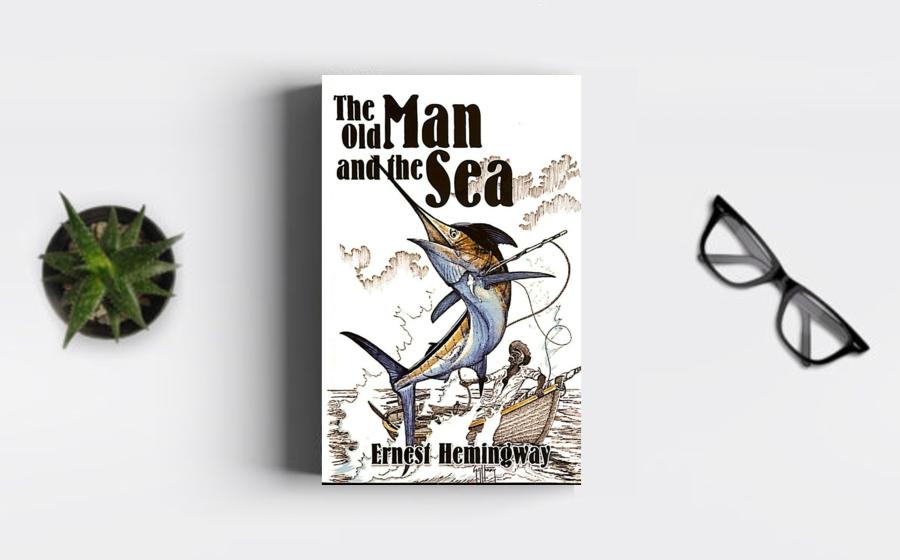"The Old Man and the Sea," published in 1952, is a
timeless novella that stands as a literary masterpiece,
exploring profound reflections on life through the
solitary struggle of its protagonist, Santiago, a Cuban
fisherman. Set against the backdrop of the Gulf Stream,
the story unfolds as an epic battle between man and
nature, offering readers a profound meditation on the
human condition, the inevitability of struggle, and the
nature of victory. As we delve into the reasons behind
its enduring acclaim and significance, it becomes clear
that "The Old Man and the Sea" is not merely a tale of a
fishing expedition but a symbolic journey that
encapsulates the essence of the human experience.
At the heart of the novella is Santiago, an aging
fisherman with a deep connection to the sea. Hemingway
crafts Santiago as a symbol of the indomitable human
spirit, drawing upon his knowledge of the sea and the
hardships of life in Cuba to create a character whose
resilience becomes emblematic of the universal struggle
against the forces of nature and fate. Santiago's
pursuit of the marlin, a giant fish that becomes the
focal point of his struggle, mirrors the broader human
quest for meaning, purpose, and the pursuit of an
elusive yet significant goal.
The novella opens
with Santiago experiencing a prolonged period of
unsuccessful fishing, marking a metaphorical
representation of life's challenges and setbacks.
Santiago's determination to venture out into the deeper
waters, despite his recent lack of success, serves as a
reflection of the human spirit's innate drive to face
adversity head-on. Hemingway presents Santiago not as a
defeatist but as a stoic figure who understands that
struggle is an inherent part of existence, and victory
lies in the resilience to confront challenges.
As
Santiago embarks on his solitary journey into the Gulf
Stream, the novella becomes a rich tapestry of symbolism
and allegory. Hemingway uses the sea as a metaphor for
life itself�a vast, unpredictable expanse that can
provide sustenance and abundance or pose insurmountable
challenges. Santiago's relationship with the sea is not
just that of a fisherman; it is a spiritual and
existential connection that underscores the cyclical
nature of life, with its ebbs and flows, successes and
defeats.
The marlin, the colossal fish that
Santiago hooks, becomes a powerful symbol representing
the elusive goals and aspirations that drive individuals
forward. Santiago's struggle with the marlin transcends
the mere act of fishing; it becomes a symbolic battle
against the uncertainties of life, the pursuit of
personal excellence, and the unyielding determination to
overcome obstacles. Hemingway crafts this struggle as a
universal theme, inviting readers to reflect on their
own pursuits and the significance of enduring challenges
in the pursuit of personal victories.
Santiago's
physical and mental endurance during the battle with the
marlin reflects the resilience of the human spirit in
the face of daunting odds. Hemingway does not shy away
from portraying the physical toll exacted on Santiago,
emphasizing the wounds and strains that accumulate
during the struggle. This raw portrayal of suffering
adds depth to the narrative, creating a poignant
depiction of the sacrifices and perseverance required to
confront life's trials. Santiago's determination,
despite his exhaustion and physical pain, becomes a
testament to the transformative power of human will and
the capacity to endure suffering in the pursuit of a
meaningful goal.
Hemingway's prose, characterized
by its spare and economical style, contributes to the
novella's impact, allowing the reader to immerse
themselves in the vivid imagery and emotional resonance
of Santiago's journey. The simplicity of the language
belies the complexity of the themes woven into the
narrative. Hemingway's use of precise and evocative
language serves as a vehicle for exploring profound
ideas, encouraging readers to delve beneath the surface
and extract deeper meanings from Santiago's solitary
struggle.
The novella's climax, Santiago's
eventual triumph in capturing the marlin, is both a
moment of victory and a poignant reflection on the
transience of success. Santiago's sense of
accomplishment is tempered by the harsh reality of the
sea, as he recognizes the predatory threat of sharks
that strip away his prized catch. This bittersweet
conclusion becomes a metaphor for life's relentless
cycles�moments of triumph are inevitably followed by
challenges, and the pursuit of success often comes with
the risk of loss. Hemingway's exploration of this
dichotomy invites readers to reflect on the impermanence
of victory and the inevitability of facing new
challenges in the ongoing journey of life.
"The
Old Man and the Sea" also explores themes of isolation
and existential loneliness. Santiago's solitary
existence as a fisherman, his conversations with himself
and with the sea creatures, and his internal reflections
offer a contemplative exploration of the human
condition. Hemingway delves into the psychological
dimensions of Santiago's isolation, presenting it not as
a source of despair but as a crucible for self-discovery
and inner strength. Santiago's internal monologues
become a vehicle for examining the complexities of human
consciousness and the resilience required to navigate
the solitary aspects of existence.
The
relationship between Santiago and the boy, Manolin, adds
another layer of meaning to the narrative. Manolin's
unwavering loyalty and admiration for Santiago create a
dynamic that transcends the generational gap. Their bond
becomes a representation of the passing of wisdom, the
continuity of traditions, and the enduring impact of
mentorship. Hemingway subtly suggests that the struggles
and victories of one generation contribute to the growth
and resilience of the next - a reflection on the
interconnectedness of human experiences across time.
"The Old Man and the Sea" has earned its place as a
classic not only for its exploration of profound themes
but also for its enduring relevance across cultures and
generations. Translated into numerous languages and
studied in schools worldwide, the novella has become a
touchstone for discussions about the human spirit, the
nature of struggle, and the pursuit of noble goals. Its
impact extends beyond the literary realm, influencing
diverse artistic expressions, from visual arts to film
adaptations, affirming its status as a work of enduring
cultural significance.
"The Old Man and the Sea" by Ernest Hemingway is a contemporary classic that offers profound reflections on life through the solitary struggle of Santiago. Hemingway's masterful storytelling, rich symbolism, and exploration of universal themes elevate the novella beyond a simple fishing tale. Santiago's journey becomes a metaphor for the human experience.






